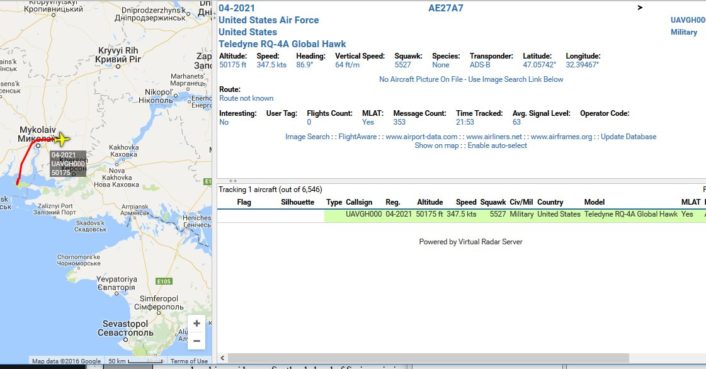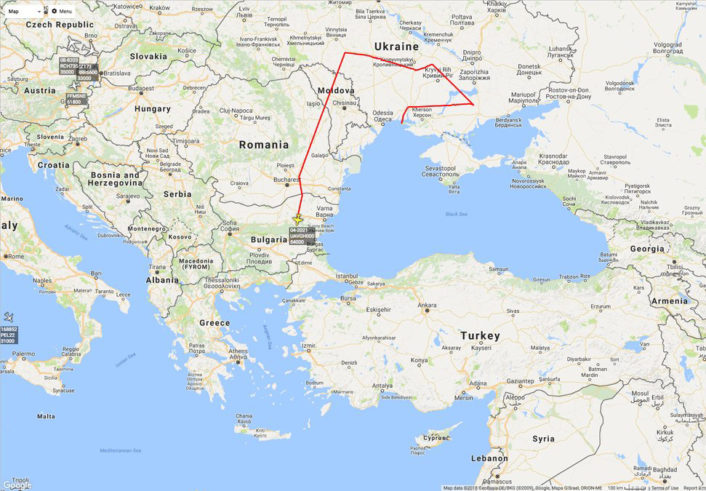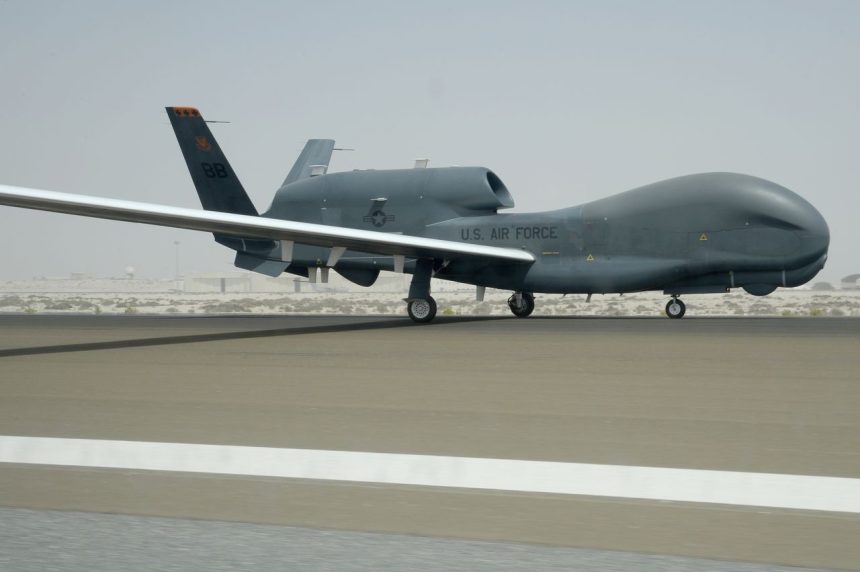U.S. Air Force’s gigantic Global Hawk drones have been flying over Ukraine for about two years. However, they recently let everyone know they were there.
Reports of U.S. Air Force RQ-4 Global Hawk UASs (Unmanned Aerial Systems) flying over Ukraine are nothing new. Back in April 2015, quoting Gen. Andrei Kartapolov, Chief of the Main Department for Operations at the Russian General Staff, ITAR TASS reported that American high-altitude long-range drone were regularly spotted over the Black Sea and, beginning in March 2015, they were also monitored flying over Ukraine.
According to the Russian high-rank officer, the use of such unmanned aircraft increased the depth of data gathering on the territory of Russia by 250 kilometers to 300 kilometers.
U.S. RQ-4Bs belonging to the 9th Operations Group/Detachment 4th of the U.S. Air Force deployed to Sigonella from Beale Air Force Base, California, have been flying ISR (Intelligence Surveillance Reconnaissance) missions in support of EUCOM, AFRICOM and CENTCOM theater mission tasking since 2011.
The Global Hawks of the flying branch had their baptism of fire on Mar. 1, 2011, and were the first to fly over Libya to perform high altitude Battle Damage Assessment sorties on targets located in regions with a residual SAM (Surface-to-Air Missiles) and MANPADS threat after Operation Odyssey Dawn was launched on Mar. 19, 2011.
Strategically based in the middle of the Mediterranean Sea, U.S. RQ-4s are regularly tasked with surveillance missions over North Africa, East Europe and Middle East. However, they usually keep a low-profile avoiding to be detected at least by commercial ADS-B receivers like those feeding online flight tracking systems such as Flightradar24.com, PlaneFinder.net or Global ADS Exchange.

At least this is what has happened until Oct. 15 when a U.S. Air Force Global Hawk could be tracked online because of its Mode-S transponder while flying over southern Ukraine.
#US #NATO RQ-4A Global Hawk surveillance drone Intel #UAV 04-2021 over Kherson Ukraine near Crimea and Donetsk republic
via @yanivschwartz pic.twitter.com/chTxgB6LLE
— Scott’s Humor (@ScottsHumor) 15 October 2016
The Global Hawk (04-2021) popped up on the radars at 50,000 feet, east of Odessa, flying towards Mariupol. Then, the remotely piloted aircraft turned northwest bound before heading towards Sigonella where it arrived after overflying Moldova and Bulgaria. At a certain point the UAS was cruising at 54,000 feet.
The flight path the aircraft followed probably enabled its imagery intelligence (IMINT) sensors to take a look at Russian bases in Crimea as well as gather information about the pro-Russia forces on the ground in the Dombass region of Ukraine.

Spyplanes (and drones) usually operate in “due regard” with transponder switched off, with no radio comms with the ATC control, using the concept of “see and avoid” where the pilot flying is responsible for avoiding all traffic conflicts, much like a VFR flight plan without flight following. Even if RC-135s can be regularly tracked online, it’s at least weird that a strategic ISR platform that has remained “invisible” thus far, has operated with the transponder turned on over a highly sensitive region.
We can’t completely rule out this happened by accident but considered that the risk of breaking OPSEC with an inaccurate use of ADS-B transponders is very well known it seems quite reasonable, in a period of raising tensions with Russia, to believe that the unmanned aircraft purposely broadcast its position for everyone to see, to let everyone know it was there.
Russian spyplanes have done the some in the past: for instance the Tu-214R, Russia’s most advanced intelligence gathering aircraft deployed to Syria and flew along the border with Ukraine with its transponder turned on.
Top image: an RQ-4 deployed to Southwest Asia (U.S. Air Force)
















